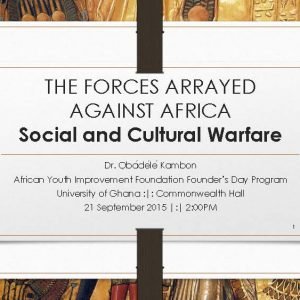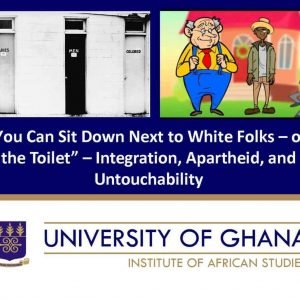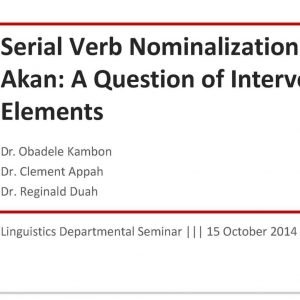$20.00
Description
In this paper, we aim to use Dikenga, the cosmogram of the Bakôngo, as an Afrikan cosmological, philosophical, conceptual, and theoretical framework to analyze the structure of Akan Ananse and Yorùbá Ìjàpá stories. According to Fu-Kiau, “nothing exists that does not follow the steps of the cyclical Kongo cosmogram” (Fu-Kiau 1994: 26). This bold hypothesis is tested in this study by applying what we term the “Dikènga theory of literary analysis” to the aforementioned stories. We find that this theoretical framework can help us shift away from concepts of “storylines” and “timelines” to reveal the patterned and cyclical nature of material, spatial and temporal phenomena. Further, we find such an approach may deepen our understanding of these stories as manifestations of a shared Afrikan worldview.
AHSA/PANAFEST/UCC COLLOQUIUM26 July 2021
Duration: 1 hour, 13 minutes 27 seconds
61 Slides
Related products
-
![Why Gandhi Must Fall [125 Slides + Video!!!]](https://obadelekambon.com/wp-content/uploads/2019/11/gandhi-300x300.jpg)
Why Gandhi Must Fall [125 Slides + Video!!!]
$20.00 Add to cart -

The Forces Arrayed Against Africa: Social and Cultural Warfare
$20.00 Add to cart -

“You Can Sit Down Next to white Folks – on the Toilet” – Integration, Apartheid, and Untouchability
$20.00 Add to cart -

Serial Verb Nominalization in Akan: A Question of Intervening Elements
$20.00 Add to cart


Leave a Reply